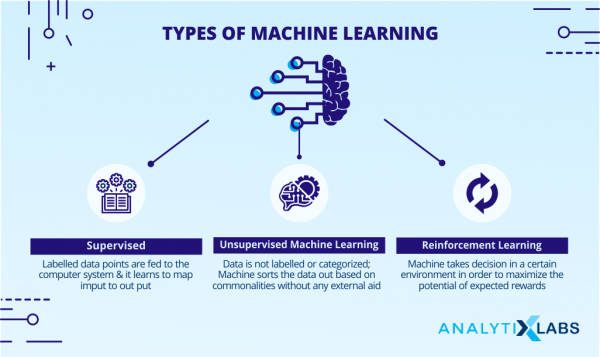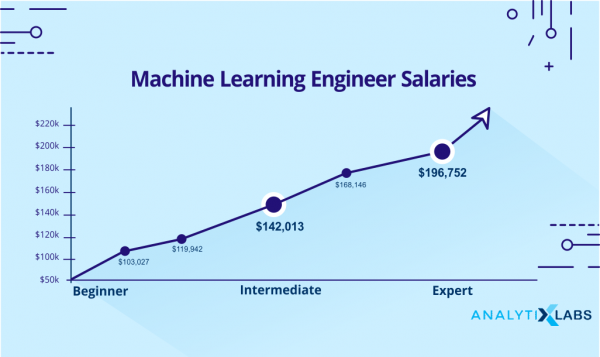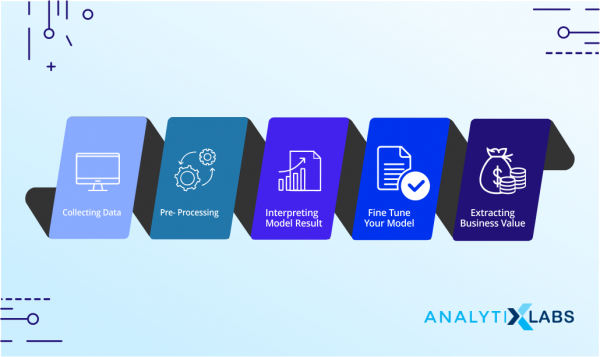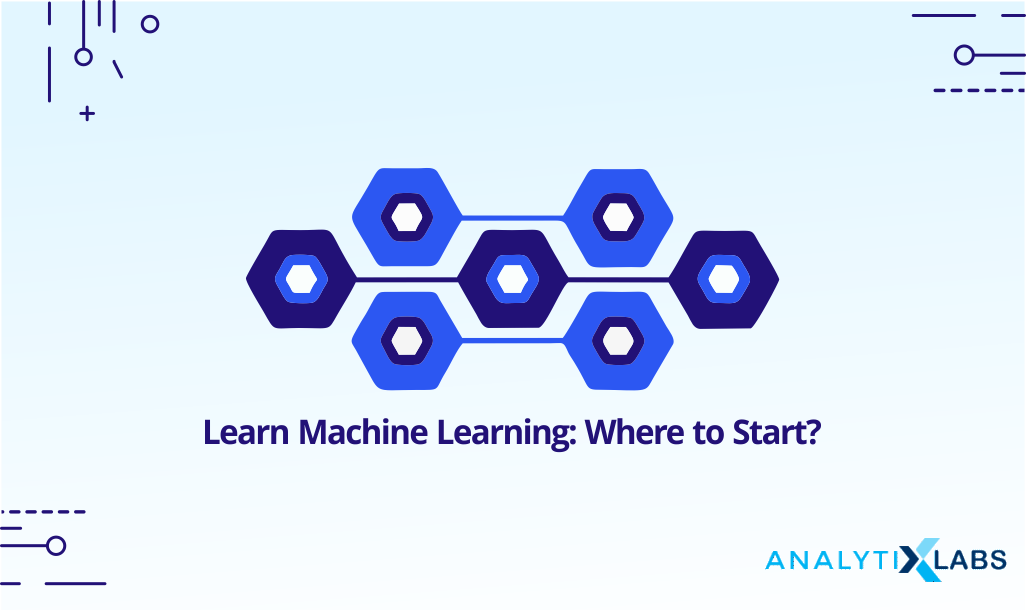If you’re a techie, odds are that you’ve heard the term Machine Learning being thrown around a lot these days. In fact, it seems to be the buzzword for anyone working on new innovations, that too across diverse and vastly different sectors.
So what’s the first thing that pops into your head when you think of machine learning? Is it an image of some futuristic robot making human-like decisions yet speaking in a deadpan, emotionless voice? Well, we’re not quite there yet!
In the present, what Machine Learning can be for you is a very lucrative, high-potential and much sought after skill. One that would add immense value to your profile if it was part of your skill set.
In this blog, we hope to help you learn how to learn machine learning. So let us dispel any doubts you may have about the subject by breaking it down for you in a step-by-step manner.
What is Machine Learning?

Machine Learning enables a computer to process and learn from data in a way that helps it make intelligent and accurate predictions and decisions. It is a key part of two of the most cutting-edge technologies around, namely data science and AI (Artificial Intelligence).
You may like to read in more detail: What is Machine Learning?
1. Supervised Machine Learning
This is the type where labelled data points are fed to the computer and it learns to map input to output based on example input-output pairs.
A prime example of supervised machine learning is when your email decides to send something to the spam folder.
2. Unsupervised Machine Learning
In this type, data is not labelled or categorized in any way. The machine sorts the data out based on commonalities without any external aid.
A practical example of this is how data is collected for marketing and the machine segregates customers into target groups based on some common behaviour.
3. Reinforcement Learning
This is probably the type of machine learning with the most exciting scope of practical uses. Reinforcement learning helps the machine take decisions in a certain environment in order to maximize the potential of expected rewards.
An example would be how self-driving cars in the future would require machines to able to navigate through the surrounding environment.
Why should I learn Machine Learning?
Well, that’s the million-dollar question today, isn’t it?
Like we said before, Machine Learning is one of the most prized skills in the world today.

We are getting increasingly closer to the digitized future that we used to read about in sci-fi books and see in movies.
A big part of that is through things like data science and AI.
Everything around us can now be converted to data, which is why data science is of such huge interest to the top companies worldwide. Artificial Intelligence, on the other hand, could completely change everything about our lives.
Both of these fields require machine learning, but its use is not just restricted to this pair. Machine Learning knowledge is an added bonus for software engineers, business analysts, developers, and many other different profiles.
However, the best part of why you should learn about machine learning isn’t the one where it can further your career prospects. Machine Learning can be a lot of fun. You’re exploring and playing with a cutting-edge technology that could make or break the future of all of mankind. There’s a thrill in that which just doesn’t match up to a lot of technical pursuits out there.
Long story short, if you spend some time learning Machine Learning, then you are in for a great time and one helluva ride!
Where and How Should I Start?
There are plenty of courses out there that claim to be the best Machine Learning course. But the thing about machine learning is that it’s an intuition based process, so there’s only so much that a course can teach you.
That being said, there are still some basic prerequisites that you need to be well-versed in before you embark on your machine learning journey. In order to be able to build the right ML algorithms, you need to get these basics right.
Stats, Maths and Python
If you’re looking to become a data scientist, then Python is the language that you need to code in. The right Python data science course will make sure that you have a firm grasp on Python and can leverage it in your pursuit of the ML experience.
Apart from the language, you also need to sharpen up your statistical and mathematical skills. For both, there are courses that offer specific education on how to apply statistics and Maths to data science, and subsequently for Machine Learning.
Knowledge of these three subjects forms the cornerstone of your Machine Learning journey. They are the prerequisites that you need to get right, so this is ideally where you should begin.
Theory, Practice, and Projects
After the first step, you can now move on to the core subject. You are now equipped to build functional machine learning algorithms and understand how they function.
However, as the old idiom goes ‘practice makes one perfect’, and in the case of machine learning, practice is the only way to make sure that you’ll be able to deliver.
The following five steps are key to implementing your machine learning strategy on the field. Practice runs through the below process and will help you develop the know-how and intuitive knowledge to succeed on a live project.

# Collecting the Data
Any machine learning process is built on data, and in order to build an algorithm, you need to first feed data to the machine. In this step, you must decide what type of data would be most relevant for your project, how much data you should provide, and which data is the most relevant for your end purpose.
# Pre-processing
Understanding how your algorithm can best process the database is a tricky job, but it’s your tricky job. In this step, you need to make assumptions as to how your algorithms will read the data so that the interpretation will be as per your expectations.
# Interpreting Model Results
After your first successful process implementation, comes the third and possibly most important step. Here you need to interpret model results to figure out if the machine is working optimally, is there any scope for improvement, and where data is being underutilized.
# Fine-Tuning Your Model
It is nearly impossible that you will develop a flawless model at the first attempt. So the logical action following interpretation is fine-tuning. Now that you’ve identified where your model can be improved, you need to go about fixing the shortfalls. This helps you understand different tuning parameters and regularization methods.
# Extracting Business Value
This is where your technical procedure directly translates to business value. Whenever you’re pitching or creating a Machine Learning Process in a profit-based operation, it’s always important to have an understanding of what kind of gains it can provide to the business. This is the part where you delineate where your solution is helping the company benefit.
The Way Ahead!
And there you have it, our short guide on learning about Machine Learning. This is merely the abridged version, but it highlights the what, how and where about all things ML related. We hope that the guide can help you excel in your endeavour to become an ML expert.
If you’re interested in the long version, which expounds on each and every aspect of the process, then you can try our dedicated Machine Learning course. It gives you a flexibility of choosing a mode according to your comfort, ML course is available in instructor-led online/classroom mode/self-paced mode for completing at your own pace. Enrolling to Machine Learning course gives you the chance to become a certified expert on Machine Learning at a very competitive cost.
After reading so much about ML, we’re sure you can’t wait to get started on getting hands-on knowledge. So all the best on this exciting new career path that you’ve chosen!
You may also like to read: How to learn AI and Machine Learning by yourself?









2 Comments
I want to to thank you for this fantastic read!! I certainly enjoyed every bit of it. I’ve got you bookmarked to check out new things you post…
I am really happy to say it’s an interesting post to read . I learn new information from your article , you are doing a great job . Keep it up